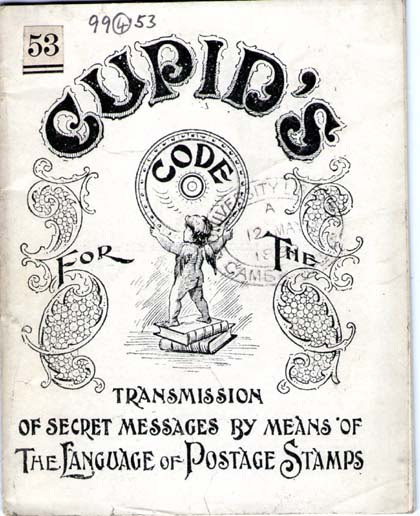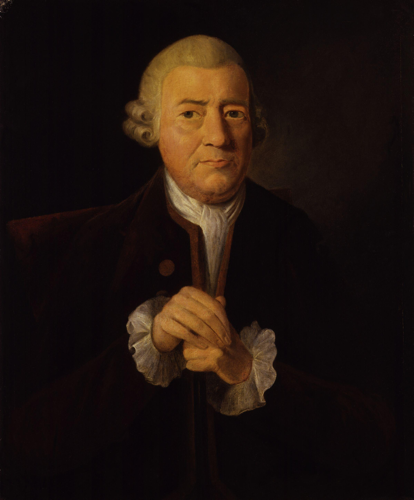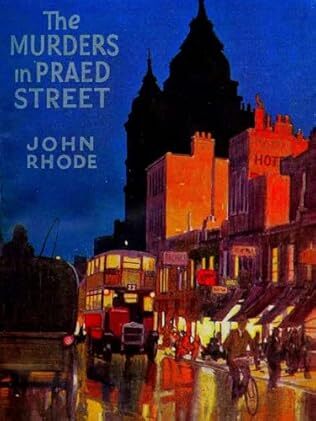Martin Fone's Blog, page 17
May 12, 2025
No Past Is Dead

A review of No Past is Dead by J J Connington – 25 0401
It is a while since I have read a novel by J J Connington. No Past is Dead is a later one, the fifteenth in his Sir Clifford Driffield series and originally published in 1942, and is really rather good. There is more than a little touch of the exotic in the story and a fabulous alibi which takes all of Driffield’s ingenuity and the resources of the Yard to crack.
The story starts with Driffield hosting a dinner at which his faithful Watson figure, Wendover “the Squire”, and a journalist, Peter Diamond are present. Diamond regales the pair with an account of the extraordinary goings on at the Hernshaw Thirteen Club, at which its leader, Ambrose Brenthurst, goes out of his way to defy almost every superstition about bad luck. For the student of folk lore it is a fascinating resume of what acts are guaranteed to bring with them ill fortune.
Brenthurst is also a moneylender with a particular penchant for ensnaring young women, one of whom is Diana Teramond, who invites him to her house, Fountain Court, at 1 am. There is an argument, and Brenthurst’s body is found on the road and is found by a would-be housebreaker in the process of being devoured by a cheetah. Miss Teramond, a second-rate actress on the musical hall stage, incorporated a cheetah into her act and then subsequently kept it as a pet, rather like Josephine Baker.
Wendover only plays a bookend in this story, in at the start and there to receive Driffield’s reconstruction of what happened at the end, his usual role of stating the bleedin’ obvious and getting old of the wrong end of the stick being played by Inspector Sandrock. Sandrock is too eager to take evidence at its face value and construct fanciful theories, much to Driffield’s amusement and irritation. Driffield’s style is to take a more measured approach at the risk of seeming haughty and condescending to his underlings. For a Chief Constable he takes a surprisingly active part in investigations.
As well as a man-devouring cheetah, we have suspicions of voodoo practices, complete with obligatory racist comments about the denizens of Haiti, a jewel that is cursed, and to add to the fun of the fair the gardeners are stealing some of the apples to sell clandestinely at the time of the murder as well as a housebreaker about to case the joint, and the Faircrosses, mother and son, lurking on the scene. Just for good measure, there is another murder, that of Mrs Brenthurst’s maid, another case of someone who knows too much. At one point there are as many potential suspects in the grounds of Fountain Court as you would expect to find at Picadilly Circus at that time of the night.
However, the main suspects become clearer as the narrative progresses. The keys to the mystery are a complicated family tree, a shadowy figure by the name of and a Christian name that can equally apply to a female as well as a male, a point that passed me by in this instance, and a signed affidavit all the way from San Francisco. It is fascinating to note that the investigation was effectively stalled for several weeks as this crucial piece of information made its way through the transatlantic postal system. With this to hand, the mystery is solved.
It would not be a Connington novel without some didacticism peeping through. Crucial to the motive for the crime is an understanding of the Birkenhead Act of 1925 and in the solving of it the use of Hudson’s method, an advanced form of test for blood which was introduced in 1935. Driffield, of course, not only knows about the test but has practiced with it so he casn use it with ease.
The bones of the plot are based on an 1890 case in France where a Madame Achet killed a notary by the name of Lépine, to whom she owed 17,000 francs, in the garden after a struggle, in self-defence, she claimed. With these few essentials Connington weaves an altogether different story and excellent it is too.
May 11, 2025
The Cost Of Politeness

Social media has allowed so-called keyboard warriors to interact with the world in ways that they would not have the courage to do in face-to-face encounters. It has become a jungle so it is nice to come across examples where users adopt a degree of civility, using words like “please” and “thank you” in their interactions.
However, the use of these small tokens of civility come at a cost to the techbros. OpenAI boss Sam Altman recently revealed that people writing “please” and “thank you” in their interactions are costing his company “tens of millions of dollars”. As an large language model (LLM), even the smallest prompts require ChatGPT to process the information and generate responses. This consumes energy and costs the company money.
Surely this is a small price to pay for a little bit of civility in a world that is increasingly devoid of it. If you must use AI, be polite. They can afford it!
May 10, 2025
Magician Of The Week

Founded in 1905 as a haven for those who are skilled in legerdemain and illusory deception, there is something deliciously ironic about the story of Sophie Lloyd’s contretemps with the Magic Circle. It was a strictly men only institution until 1991 when 75% of the Circle’s membership voted to allow entry to women.
To their horror, though, they found that they had already admitted a woman eighteen months earlier, Sophie Lloyd. To facilitate the deception the ingenious Lloyd with the help of fellow magician, Jenny Winstanley, had donned a male body suit, a wig, gloves to disguise her feminine hands, and “plumpers” in her cheeks to give herself a square jaw and assumed the name of Raymond Lloyd in preparation for the entry exam which she passed with flying colours.
When the ban on women was lifted, Lloyd came clean but instead of being amused that the wool had been pulled over their eyes, the Circle, which has previous for taking itself a tad too seriously, decided to throw her out for the deliberate deception.
Now around 5% of the Circle’s 1,700 members are female and it currently has a female chair, Laura London. She has made it her mission to track Lloyd down, apologise for her treatment and readmit her to the Circle. However, like all good magicians Lloyd had disappeared in a puff of smoke. Thanks to Lloyd’s sister contact has eventually been made and 34 years on Lloyd is now a member once more. She is reported to be “beyond thrilled”.
A multi-layered story if there ever was one!
May 9, 2025
Death In Captivity

A review of Death in Captivity by Michael Gilbert – 250328
Michael Gilbert’s Death in Captivity, also known as The Danger Within, originally published in 1952 and reissued as part of the British Library Crime Classics series, offers a fascinating insight into the life and experiences of prisoners of war of the officer class in the dying days of Fascist Italy during the Second World War. What struck this reader is how relatively liberal and relaxed life in the camp was with the prisoners having time enough to relax, pay games, even prepare to put on a production of The Barretts of Wimpole Street and, of course, plan and execute an escape through tunnelling.
There are, though, some elements of menace, not least the erratic behaviour of the camp commandant, Captain Benucci, concerns as to what will befall the prisoners as the Allied forces advance, and the realization that there is a spy amongst their numbers. The finger of suspicion falls on an unpopular Greek prisoner, Cyriakos Coutoules, who is found dead in one of the escape tunnels so painstakingly excavated. Henry “Cuckoo” Goyles is detailed to investigate what really happened to Coutoules.
Goyles’ task is no easy one with, obviously, no official assistance and in an environment in which everyone seems to know everything but is disinclined to reveal all. In what is part thriller, part locked room murder mystery with a closed circle of suspects, Cuckoo slowly starts to assemble some facts and impressions. Key to what went on was some strange manoeuvres with an ambulance, a wireless playing dance music very loudly, and the sound of an Anglophone voice heard by several witnesses.
The Italians, though, have their own ideas and arrest Roger Byfold, but before they can execute him, news reaches the camp of the fall of Mussolini, signalled by a newly arrived prisoner, Potter, who just as suddenly disappears. By this time the senior group of prisoners are aware that there is more than one informant, suspicions heightened by the unerring ability of the Italian guards to second guess what is going on, the discovery of wires, and a direct reference to a German intelligence officer being in their midst. Goyles, and the reader, had already worked out that Coutoules was just a sideshow.
The rapid turn of events expedites the completion of the tunnelling work and the prisoners break out, Goyles teaming up with Byfold and Tony Long, who had rescued Cuckoo from an earlier tunnel collapse. For a while the narrative concentrates on the trio’s experiences as they make their way through Italy and these passages are vivid, drawing upon Gilbret’s own wartime experiences in the area. The increasingly strained relationships between the three and the uncharacteristic behaviour of two brings the spy issue back into focus.
By this time from an at times bewildering array of characters, Gilbert has narrowed the possible suspects down to just two and, picking his moment to perfection, Goyes reveals the identity of the spy and takes drastic action to ensure his own and that of his innocent companion’s escape from imminent danger.
As a puzzle it is fairly clued and there is more than enough in the narrative for the reader to pick up on the culprit. However, the book is more than a simple whodunit, offering a fascinating insight into conditions in a theatre of war that often gets overlooked. In a series where the definition of classic can seem a little elastic, this is a book that warrants that description.
May 8, 2025
The Language Of Stamps (2)

During the late 19th century and early 20th systems were developed that imbued the positioning of a postage stamp on a postcard with meaning. Not content with just one stamp some were extended to encompass two.
A postcard clearly aimed at English, French, and German speakers revealed the potential offered by two stamps. Two stamps leaning towards the left meant I love you, one at right angles and the other the right way up indicated a desire for a reply, while, touchingly, the two stamps on their sides with the heads away to each other meant don’t forget me and the same arrangement but with the heads pointing towards each other signalled that they belonged together.

There is always someone, though, who takes matters to extremes. Step forward George Bury who in 1899 devised a code using the position and orientation of stamps. With eight positions and eight orientations, there were sixty-four basic messages, which could be augmented to 128 if two stamps were used. The accompanying pamphlet, Cupid’s Code for the transmission of secret messages by means of the language of postage stamps, included the messages printed in perforated strips and could be re-arranged, giving, he claimed, “close upon 270,000 different ways, so that no attempt to discover any particular combination could possibly succeed”.
Of course, the recipient had to be in on the secret and the pamphlets were sold in pairs. For those who were concerned that even Bury’s complex system did not provide adequate security, he was perfectly willing to sell them, for the princely sum of six shillings, a specially arranged duplicate code, guaranteed to be “non-existent elsewhere”.
It is difficult to get a sense of how widespread the positioning of postage stamps to deliver secret messages really was but there are enough examples from many European countries to suggest that it was an acknowledged, if somewhat niche, practice. A fascinating article in the Western Colorado Beacon Senior News on December 1, 2024, suggests that during the Second World War, when mail was censored, the language of stamps was not only widely known but well-practised. While the US Post Office required the 3-cent stamp to be placed in the right hand corner of the envelope, there was no stipulation as to its orientation.
The article suggest that the favoured system included positioning a stamp upside down at the top left hand corner to signify I love you, a stamp crosswise on the top left corner indicated that the writer’s heart was with another while assent was indicated by a stamp at the top and in the centre of the envelope and a negative response with the stamp occupying a central position at the bottom. Recipients would dread an envelope with a stamp upside down at the top right hand corner which signified write no more and be mortified if the stamp was on the top left corner and at a right angle which indicated the writer’s hatred.
In Russia, where the practice was for a time fashionable, it fell into official disfavour after 1945 not only because of the state’s aversion to any form of secret communication but also because the concept of etiquette was deemed to be bourgeois. In Western Europe there is evidence that the practice lingered well into the 1960s but now is little more than a dimly remembered piece of social history.
The next time I receive an envelope with a postage stamp on it, I will scrutinise its position with care. After all, it might just be trying to tell me something.
May 7, 2025
John Baskerville

It might be the finest edition of the King James Bible ever produced but the man behind the Baskerville Bible was not an obvious choice for producing religious tracts. Although a believer in God, John Baskerville was a fierce critic of organised religion and was not afraid to let his views be known. He also lived out of wedlock with his long-term partner, Sarah Eaves, something that scandalised his contemporaries even more.
Outspoken and controversial he might have been, but he was cute enough to realise the commercial possibilities offered by religious books. Along with his version of the bible some of his masterpieces included the Book of Common Prayer (1762) and Milton’s Paradise Lost and Paradise Regained. He also produced editions of the Roman poets including Virgil’s works and a particularly fine edition of Horace’s poetry (1762).
Controversy continued to dog Baskerville even after his death in 1775. In his will, he stipulated that he be buried “in a Conical Building in my own premises, heretofore used as a mill, which I have lately Raised Higher and painted and in a vault which I have prepared for It. This Doubtless to many may appear a Whim; perhaps It is so – but it is a whim for many years Resolve’d upon, as I have a Hearty Contempt for all Superstition, the Farce of a Consecrated Ground, the Irish Barbarism of Sure and Certain Hopes etc”.
He went on to say that he considered “Revelation,as it is call’d, Exclusive of the Scraps of Morality casually Intermixt with It, to be the most Impudent Abuse of Common Sense which Ever was Invented to Befool Mankind”. Put like that, there was only one course of action – to obey his wishes to the letter.
Trouble came in July 1791 when the Priestley riots hit Birmingham, rioters targetting religious dissenters, foremost the controversial Joseph Priestley, but Baskerville’s home and resting place was also wrecked. The land was eventually sold to a developer who cut a canal through it, his workmen in 1821 finding Baskerville’s lead-lined coffin. This discovery raised the question of what to do with it, particularly given his trenchant views on consecrated ground.
Initially, the landowner put the coffin on display as a kind of morbid tourist attraction and then it was moved to a warehouse where a plumber is said to have used it as a workbench. Eventually Baskerville’s friends arranged to have the coffin moved to the crypt of Christ Church in Birmingham where it was laid to rest.
Even so the peregrinations of Baskerville’s body did not end there. The church was demolished in 1897 and he was moved once more, along with all the other bodies in the crypt, to consecrated catacombs at Warstone Lane Cemetery, where it remains today, despite a petition presented to Birmingham City Council in 1963 to move him to unconsecrated ground in accordance with his wishes.
As one commentator suggested, the journey of Baskerville’s body puts one in mind of Francis Thompson’s poem, The Hound of Heaven (1890), about an atheist fleeing God; “I fled him, down the nights and down the days;/ I fled him, down the arches of the years;/ I fled him, down the labyrinthine ways/ of my own mind”.
His legacy lives on, of course, in his magnificent books and his typeface and even his partner, Sarah Eaves, has a typeface named after her, developed in the 1960s.
May 6, 2025
Cassava And Red Kidney Beans

A staple in the diet of around half a billion of the world’s population, Manihot esculenta, better known as Cassava, is the third largest source of carbohydrates in the tropics, after rice and maize. As a plant it is exceptionally drought-tolerant and can grow in poor soil. Broadly speaking, there are two varieties: sweet and bitter.
Cassava consumption, though, does not come without its dangers. Its roots and leaves contain toxins called cyanogenic glycosides, which break down into cyanide and can cause, goitres, paralysis, and even death. The sweeter varieties have around 20mg of cyanide per kilogram while the more bitter varieties can contain up to 1,000mg a kilo.
According to the World Health Organisation, cassava poisoning kills about two hundred people a year, making it one of the deadliest plant-based foodstuffs by number, although, thankfully, as a proportion of the number of people who eat it regularly it is fairly low.
The secret to safe cassava consumption is in the preparation. The cyanogenic glycosides can be removed by soaking peeled cassava in water or by boiling and sun-drying it.

Careful preparation is also the secret behind making red kidney beans safe for consumption. Rich in protein, fibre, and essential vitamins and minerals, they are liked for their sweet flavour and light texture and in their dried form are some of the most frequently eaten in the world.
However, in their raw or undercooked state, they are also rich in phytohaemagglutinin, a toxic version of lectin, which can damage the walls of the gut and prevent it from absorbing nutrients properly. Symptoms of poisoning include diarrhoea, abdominal pain, vomiting, and headaches.
Dried red kidney beans must be soaked for several hours and boiled for at least ten minutes to neutralise the poisons. Cooking red kidney beans for less than ten minutes at any temperature below boiling point actually increases their toxicity five-fold, meaning that they are more poisonous undercooked than in their raw state.
It is fascinating to consider how much trial and error has gone into perfecting the way to safely prepare and consume foodstuffs that are delicious but contain hidden dangers. Who would be a pioneer?
May 5, 2025
The Murders In Praed Street

A review of The Murders in Praed Street by John Rhode – 250325
The fourth book in John Rhodes’ Dr Priestley series, originally published in 1928, is the only one of his novels to be filmed. Twelve Good Men, a title that rather gives the game away, directed by Ralph Ince, was released in 1936.
The distinctly run-down and working class area around Praed Street has been the scene of some unusual murders, six in all, and there seems to be no obvious connection between the them, save that shortly before their deaths each of the victims had received an envelope bearing a counter with a number on, an idea loosely drawn upon by Jefferson Farjeon in his later The Z Murders. Is there aa serial killer on the loose and do they live in the area?
The book falls into two parts, the first dealing with each of the murders and introducing us to a tobacconist by the name of Samuel Copperdock and an amiable herbalist, Elmer Ludgrove, who acts as the father confessor of the neighbourhood and whose source of local gossip and indiscretions is eagerly tapped into by the local investigating police. In their own ways Copperdock and Ludgrove try to solve the mystery but the more that is discovered the more incriminating is the evidence towards Copperdock.
Then Copperdock too receives a counter and shortly afterwards he is found dead in a locked room in circumstances that are suggestive of an unusual form of suicide. There had been reports of a mysterious Black Sailor being seen in the area around the time of some of the murders but the testimony of the witnesses, a ne’er-do-well, Wal Snyder, and Copperdock himself are discounted as being unreliable and possibly hallucinatory.
By the time of Copperdock’s death the book is in its second part, the Yard in the form of Inspector Hanslet and, inevitably, he consults Dr Lancelot Priestley, who has just come out of a self-imposed purdah while writing a book. The Doctor is intrigued by the case and the name of Copperdock rings a vague bell in his capacious memory. He sends his faithful secretary, Henry Merewether, off to research court records and he finds the trial of Dr Morlandson.
Given the recent debate about assisted dying, there is a modern relevance to the story. Morlandson eased his patient, Lord Whatley’s, end by over-injecting him with morphia, an act of kindness, his defence claimed, a cold blooded murder, the prosecution averred. The jury found Morlandson guilty of murder and while his death sentence was commuted to a sentence of twenty years imprisonment, of which he served 14, the prisoner claimed it was an egregious case of a miscarriage of justice.
Given Priestley’s central role in the Morlandson case, he was the foreman of the jury, it takes him a while to twig the link between the six murder victims, Tovey, Colburn, Pargent, Martin, and Goodwin, a connection reinforced when he himself receives a counter. However, why did Ludgrove receive a counter too?
It is a case of revenge and while the identity of the culprit is blindingly obvious, there is more than a little ingenuity displayed in the planning of and the execution of the murders. Priestley, who takes a more active role in the investigation than in some of the other stories I have read, finds himself face to face with the Black Sailor in Dorset and is placed in mortal danger in a hair raising denouement.
As a piece of entertainment it is a lot of fun and it is easy to see why it is considered to be one of his better novels. It has been out of print for a long while, but there is now a cheap edition available from Ancient Wisdom Publications which brings it within the pocket of money to discover and enjoy.
May 4, 2025
Water Of The Week

Sadly I was too late to register for the Global Premium Water Conference aka the FineWaters SUMMIT and the Bottled Water TASTE & DESIGN AWARDS 2025, which was held at the Kimpton Sylvan Hotel in Atlanta, Georgia. Mind you, it would have cost me $995 to register but it offered the opportunity to sample some of the world’s most luxurious bottled waters.
Philistines might think that water is water but the conference is designed to pump the pretentious into H2O and to convince doubters that “fine water is a natural product with terroir that holds experiences and wellness”. Amongst the 1,000 aguas on display include bottles of Tasmanian raindrops collected before they reached the ground, snowmelt that has been “filtered through volcanic rocks in a remote part of Peru”, and a magnesium-rich brand that costs up to $200 for six bottles.
Organiser, Michael Mascha, revealed that when he goes to a party, he brings a bottle of Svalbarði, the iceberg water, and tells people that it is 4,000-year-old water – rain that fell 4,000 years ago. “No one talks about the 50-year-old Burgundy anymore”, he avers.
Mm, not in my circle, mate. A trend to keep an eye on, though.
May 3, 2025
Socks Of The Week

Here is a cautionary tale from China. An unnamed man from Chonqing, described as an office worker, tried to self-medicate his persistent coughing with over the counter medications without success. The cough was so persistent that it disturbed his sleep and he was eventually admitted to the Southwest Hospital of the Army Medical University.
Doctors found signs of an infection of the right lung and after performing a bronchoscopy, inserting a flexible tube into the throat to collect samples from the airways, they discovered evidence of aspergillosis, a lung disease caused by inhaling spores from aspergillus mould.
The man, under questioning, revealed that he had developed the habit of sniffing his used socks that he had taken off at the end of the day. Testing the socks, the medics found the same strain of aspergillus fungus. Apparently the damp, salty environment inside used socks make it a perfect breeding ground.
Good to know.



